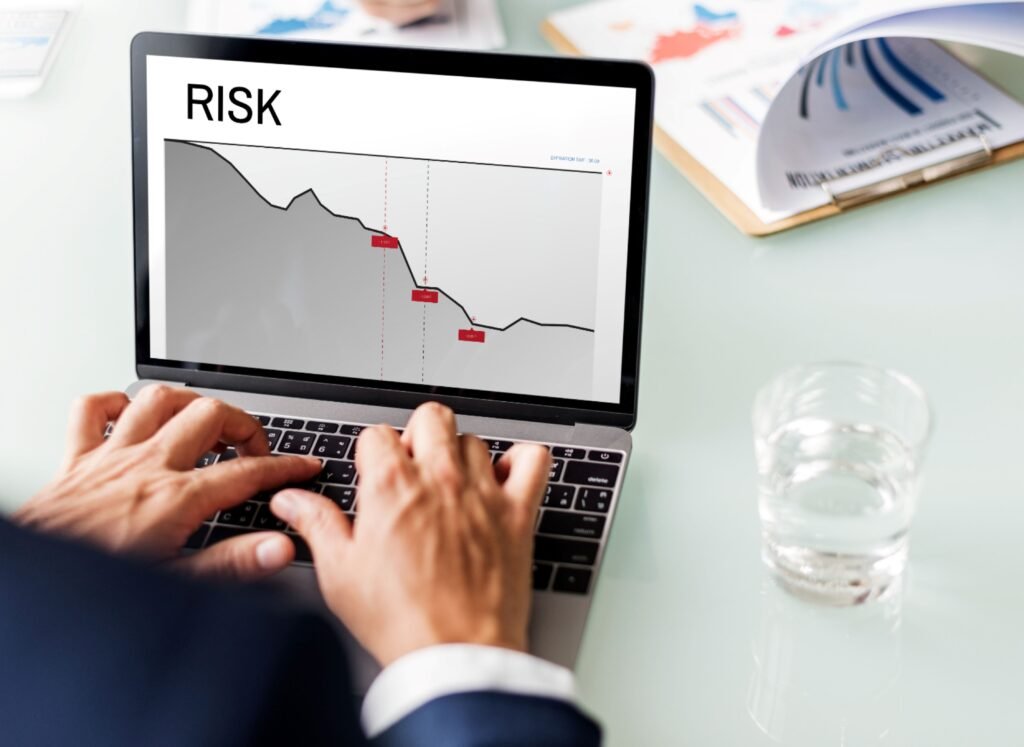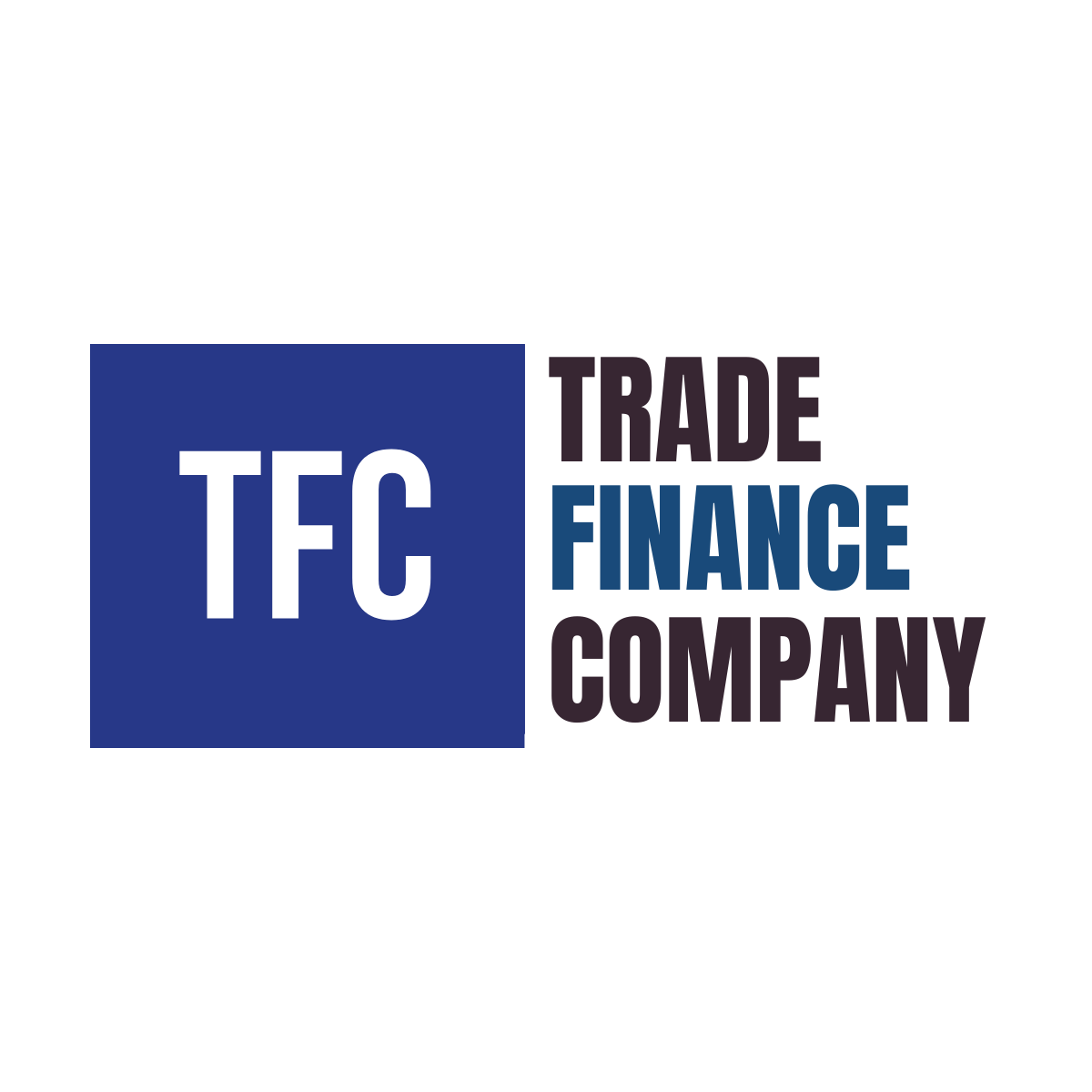Sustainable Trade Finance: How It Supports Eco-Friendly Practices

Sustainable Trade Finance: How It Supports Eco-Friendly Practices Sustainability is no longer a choice but a necessity in today’s global economy. Sustainable trade finance has emerged as a powerful tool to support eco-friendly practices in international trade. By aligning financial solutions with environmental goals, businesses can foster growth while minimizing their environmental footprint. Image by freepik In this week’s blog, you’ll learn how sustainable trade finance can drive eco-friendly business practices, reduce carbon footprints, and unlock new opportunities in global markets—all while enhancing your brand’s reputation and compliance with green standards. Imagine a world where every trade transaction contributes to a healthier planet. Where exporters and importers collaborate to reduce emissions, protect natural resources, and build a sustainable future. This is not just a vision—it’s happening now. Through sustainable trade finance, companies are stepping up to take responsibility, ensuring that their operations do more good than harm. The question is, will your business be part of this transformative movement? “Sustainable trade finance is a win-win—it helps businesses thrive while supporting the planet. It’s the key to resilient and responsible global trade.” – John Taylor, Environmental Finance Expert By the end of this article, you’ll discover how sustainable trade finance works, what instruments are driving eco-friendly practices, and actionable steps your business can take to align with this global trend. 1. Adopt Green Financing Tools Consider using green financial instruments, such as green bonds and sustainability-linked loans, to fund projects that have a positive environmental impact. These tools often come with incentives, such as lower interest rates, for meeting eco-friendly performance targets. By integrating green financing into your operations, you can align your business with sustainability goals while also attracting investors who prioritize environmental responsibility. 2. Evaluate Supply Chain Sustainability Work closely with suppliers and partners who prioritize sustainable practices, such as using renewable energy, reducing waste, and supporting fair trade initiatives. Conduct audits and assessments to ensure that their operations align with your environmental and ethical standards. A sustainable supply chain not only enhances your reputation but also mitigates risks associated with environmental and social compliance issues. 3. Leverage Certifications Obtain recognized certifications like ISO 14001, which demonstrate your commitment to effective environmental management systems. These certifications can strengthen your credibility with stakeholders, customers, and trade partners who value sustainability. Showcasing certified practices can also give you a competitive edge in markets that increasingly prioritize green initiatives. 4. Partner with Green Banks Collaborate with financial institutions that specialize in sustainable trade finance, offering customized solutions to support eco-friendly operations. These banks often provide access to green funding programs and advice on improving environmental practices. Partnering with green banks reinforces your commitment to sustainability and aligns your financial strategies with global environmental standards. 5. Educate Your Team Conduct regular training programs to help your staff understand the importance of sustainability and how it impacts your business. Encourage innovative thinking and invite employees to propose eco-friendly solutions for various aspects of your operations. By fostering a culture of sustainability, you can ensure that your team actively contributes to your company’s environmental goals. Ready to make your trade operations greener and more impactful? Our sustainable trade finance solutions can help you achieve your environmental goals without compromising profitability. Contact us today for expert guidance and tailored solutions. Subscribe to our newsletter for more insights into the intersection of sustainability and trade finance. Let’s build a better future together! Get In touch!
Navigating Trade Finance Risks: A Practical Guide for Businesses

Navigating Trade Finance Risks: A Practical Guide for Businesses Trade finance is essential for businesses engaged in global trade, but it’s not without its risks. From currency fluctuations to payment defaults, businesses must navigate a complex landscape to protect their interests. Understanding these risks and employing effective mitigation strategies can be the difference between success and costly setbacks. Image by rawpixel.com on Freepik In this blog, you’ll uncover actionable insights to identify and manage trade finance risks effectively. By the end, you’ll be equipped with tools and strategies to safeguard your transactions and foster smooth international operations. Imagine securing a lucrative international deal, only to face delayed payments or unexpected fees that strain your business finances. The excitement of growth can quickly turn into frustration and anxiety when unforeseen risks emerge. But what if you had a roadmap to anticipate these challenges and mitigate them before they impact your bottom line? With the right trade finance practices, you can approach every deal with confidence and stability. “Risk is inherent in global trade, but businesses that proactively address these challenges are the ones that thrive.” – Sarah Bennett, Trade Finance Risk Specialist As you continue reading, you’ll gain practical knowledge about the most common trade finance risks—like credit, currency, and performance risks—and learn how to apply proven strategies to mitigate them effectively. 1. Evaluate Creditworthiness Conduct comprehensive background checks on your trading partners to ensure they have a reliable financial history. Utilize tools like credit reports, trade references, and payment history to assess their ability to fulfill financial commitments. This proactive approach helps mitigate the risk of non-payment and builds a foundation of trust in your trade relationships. 2. Utilize Trade Finance Instruments Leverage financial tools such as letters of credit, bank guarantees, and trade credit insurance to safeguard your transactions. These instruments provide assurance of payment and protect your business from counterparty risks, especially in international trade. By incorporating these tools, you can facilitate smoother operations while minimizing financial uncertainties. 3. Hedge Against Currency Risks Use financial strategies like forward contracts or currency options to lock in favorable exchange rates and reduce the impact of currency fluctuations. These tools are particularly useful for businesses operating in markets with volatile currencies. By hedging against exchange rate risks, you can stabilize your cash flow and focus on growth without worrying about adverse currency movements. 4. Diversify Your Markets Expand your business across multiple regions to avoid over-reliance on a single market, which can expose you to geopolitical or economic risks. Diversification reduces the impact of regional disruptions, such as trade restrictions, political instability, or economic downturns. By building a broad market base, you ensure stability and create opportunities for growth in various economic climates. 5. Leverage Technology Adopt digital trade platforms that streamline documentation, payment processing, and real-time tracking of transactions. These platforms enhance transparency, improve operational efficiency, and help detect fraud through advanced analytics. By leveraging technology, you can stay competitive, secure your trade operations, and reduce time spent on administrative tasks. Trade finance risks don’t have to stand in the way of your global business success. Partner with us for tailored solutions that mitigate risks and streamline your operations. Contact us today to explore your options, and subscribe to our newsletter for more expert tips and insights. Let’s navigate the world of trade finance together! Get In touch!
Starting 2025 Strong: How Trade Finance Can Empower Your New Year Business Goals

Starting 2025 Strong: How Trade Finance Can Empower Your New Year Business Goals The beginning of a new year is the perfect time to set ambitious business goals and explore opportunities for growth. Trade finance can play a crucial role in enabling your business to achieve these objectives by offering innovative financial solutions that streamline operations, reduce risks, and unlock new markets. Image by macrovector on Freepik We will show you how trade finance can help your business start 2025 on the right foot by addressing cash flow challenges, minimizing risks, and optimizing your global trade strategies for success. Picture this: It’s January 2025, and your business is poised for growth. You’ve mapped out your goals—expanding into new markets, increasing production capacity, or launching a new product line. But then reality sets in: cash flow constraints, supplier delays, or payment risks threaten to derail your plans. Don’t let these obstacles hold you back. With the right trade finance tools, you can turn these challenges into opportunities and ensure your business thrives in the new year. “Trade finance isn’t just about transactions; it’s about enabling businesses to dream bigger and achieve their full potential in the global marketplace.” – Michael Roberts, Trade Finance Consultant By reading this blog, you’ll discover how trade finance solutions like letters of credit, bank guarantees, and working capital financing can help you overcome financial hurdles, reduce risks, and achieve your 2025 business goals with confidence. 1. Leverage Letters of Credit Letters of Credit (LCs) act as a payment guarantee, ensuring sellers receive payment once specific terms of the agreement are fulfilled. This financial instrument protects both buyers and sellers, promoting trust and ensuring smooth cash flow in international transactions. Leveraging LCs can also help your business negotiate better terms with suppliers by demonstrating financial credibility. 2. Consider Export Financing Export financing provides businesses with the capital needed to fund production, shipping, and other logistics when expanding into international markets. This support allows companies to fulfill large orders without straining operational budgets or missing growth opportunities. By accessing export financing, businesses can confidently enter new markets and build a global presence. 3. Adopt Risk Mitigation Tools Performance guarantees and advance payment guarantees provide assurance to both parties in a transaction, minimizing counterparty risks. These tools ensure that sellers deliver on their commitments and buyers fulfill their payment obligations, reducing uncertainties. Incorporating such guarantees into your trade finance strategy helps protect your business against losses due to non-performance or non-payment. 4. Invest in Digital Trade Solutions Digital trade finance platforms simplify and accelerate the documentation, payment, and communication processes associated with international trade. These platforms reduce the likelihood of errors, enhance transparency, and provide real-time tracking of transactions. By adopting digital solutions, your business can improve efficiency and stay competitive in a fast-evolving trade landscape. 5. Plan for Growth Collaborate with trade finance experts to develop a tailored strategy that aligns with your business goals and market opportunities. A well-structured plan can help you manage risks, access the right financial instruments, and ensure sustainable growth. By planning proactively, you position your business to capitalize on emerging opportunities and navigate challenges with confidence. Don’t let financial barriers stop you from achieving your 2025 business goals! Partner with us for tailored trade finance solutions that empower your growth and success. Contact us today to discuss your needs, and subscribe to our newsletter for actionable insights and expert advice. Let’s make 2025 your most successful year yet! Get In touch!
Trade Finance During the Holiday Season: Ensuring Smooth Global Trade for the Busiest Time of the Year

Trade Finance During the Holiday Season: Ensuring Smooth Global Trade for the Busiest Time of the Year The holiday season is a peak time for global trade, with businesses racing to meet demand and deliver goods on time. Effective trade finance solutions are critical to ensuring smooth transactions, avoiding delays, and keeping shelves stocked during this bustling period. Designed by Freepik In this blog, we’ll reveal how trade finance can help you navigate the unique challenges of the holiday season, ensuring seamless global trade and maximizing profitability during this critical period. Imagine this: You’ve worked tirelessly to prepare for the holiday rush, but a delayed payment or logistical hiccup derails your supply chain. Orders are piling up, customers are waiting, and you’re left scrambling to fix the situation. It’s every business owner’s nightmare during the busiest time of the year. Trade finance can be your safety net, providing the financial tools and guarantees you need to avoid such scenarios and keep your business running like a well-oiled machine. “The holiday season is a time of opportunity, but it’s also a time when businesses face their greatest logistical and financial challenges. Trade finance ensures they’re prepared to succeed.” – Sarah Davis, Trade Logistics Expert By reading this article, you’ll learn how to leverage trade finance solutions to overcome common holiday-season challenges such as cash flow constraints, supply chain disruptions, and increased competition, enabling you to deliver results when it matters most. 1. Plan Ahead with Letters of Credit Letters of Credit (LCs) offer a reliable payment mechanism that ensures suppliers receive timely payments once shipment and documentation requirements are met. By securing an LC, businesses can minimize payment risks, especially when dealing with new or international partners. Planning ahead with LCs not only builds trust but also streamlines cash flow management during global trade transactions. 2. Utilize Working Capital Solutions Short-term financing options, such as working capital loans or invoice financing, help businesses manage cash flow challenges during production cycles. These solutions are particularly valuable for covering costs related to increased production, raw materials, or inventory demands. By leveraging working capital effectively, companies can sustain operations and fulfill large or unexpected orders without financial strain. 3. Embrace Technology Digital platforms simplify international trade by offering tools for real-time tracking of shipments, payments, and documentation. These platforms improve visibility across the supply chain, enabling businesses to respond quickly to potential delays or issues. Embracing technology not only boosts efficiency but also enhances transparency and communication with trade partners. 4. Leverage Bank Guarantees Bank Guarantees (BGs) act as a financial safety net, protecting businesses from losses caused by supplier or partner non-performance. Whether it’s ensuring project completion or securing payments, BGs provide an extra layer of security for high-stakes transactions. By leveraging BGs, businesses can confidently enter into agreements and build stronger relationships with partners. 5. Streamline Documentation Switching to electronic trade documentation reduces errors, speeds up processing times, and minimizes the risk of lost paperwork. Tools like e-invoicing, digital contracts, and blockchain-based systems make managing international trade transactions more efficient and secure. Streamlined documentation ensures compliance with regulations and fosters smoother interactions between buyers, suppliers, and financial institutions. Don’t let the holiday rush catch you off guard! Trade finance can help you navigate this hectic season with confidence. Contact us today to explore customized trade finance solutions tailored to your business needs. Subscribe to our newsletter for expert insights and updates to keep your global trade operations on track this holiday season! Get In touch!
Emerging Trends in Trade Finance: What’s Shaping 2025?

Emerging Trends in Trade Finance: What’s Shaping 2025? The landscape of trade finance is evolving rapidly, driven by technological advancements, regulatory changes, and shifting market dynamics. In 2025, businesses must stay ahead of the curve to navigate complexities, leverage innovative solutions, and remain competitive in global trade. Image by rawpixel.com on Freepik This blog will unveil the top emerging trends in trade finance for 2025, equipping you with insights to future-proof your strategies and capitalize on new opportunities in the global market. Picture this: You’re a business owner trying to expand internationally, but challenges like delayed payments, lack of trust, and inefficient processes are holding you back. The frustration of navigating outdated trade finance systems can be overwhelming. The good news? 2025 is bringing innovative solutions—digital platforms, blockchain technologies, and enhanced financial instruments—to transform how trade finance operates. These advancements promise to reduce friction, increase transparency, and make global business more accessible than ever before. “Trade finance is the lifeblood of global commerce, and as we embrace new technologies, we unlock unprecedented potential for growth and efficiency.” – John Smith, Trade Finance Specialist By reading this article, you’ll discover the most impactful trends shaping trade finance in 2025, such as digitization, sustainability initiatives, and enhanced risk management tools, empowering you to make informed decisions for your business. 1. Adopt Digital Trade Finance Solutions Digital trade finance platforms simplify and streamline traditional processes like invoicing, payment tracking, and document verification, reducing manual errors and saving time. These solutions enable businesses to manage their trade finance activities in real-time, ensuring faster decision-making and improved efficiency across global supply chains. By automating workflows and integrating with existing financial systems, companies can enhance their operational effectiveness while maintaining accuracy and compliance. 2. Embrace Blockchain Technology Blockchain technology offers a secure and decentralized way to manage trade finance transactions, ensuring data integrity and transparency among all stakeholders. By creating tamper-proof records, blockchain reduces the risk of fraud, eliminates discrepancies in documentation, and builds trust in international trade. Businesses can leverage smart contracts on blockchain to automate processes like payment releases and compliance checks, making transactions faster and more reliable. 3. Focus on ESG (Environmental, Social, Governance) Compliance Integrating ESG principles into trade finance practices helps businesses meet global sustainability goals and regulatory requirements. Adopting eco-friendly initiatives, such as financing renewable energy projects or ensuring fair labor practices in the supply chain, can improve a company’s reputation and appeal to socially conscious partners. By aligning operations with ESG standards, companies can access new markets, attract investors, and demonstrate their commitment to sustainable growth. 4. Strengthen Risk Management Advanced data analytics tools provide businesses with insights to identify and mitigate potential market risks before they escalate. These tools analyze trends, assess creditworthiness, and forecast market fluctuations, enabling better financial planning and decision-making. Proactively managing risks through analytics ensures business continuity and minimizes financial losses in the volatile landscape of global trade. 5. Collaborate with Fintechs Partnering with fintech companies allows businesses to access cutting-edge technology tailored to modern trade finance needs. Fintechs provide innovative solutions such as real-time payment processing, digital onboarding, and AI-driven risk assessment, simplifying complex processes and improving efficiency. Collaborating with fintechs also enables companies to stay competitive by adopting advanced technologies that meet the evolving demands of international trade. 2025 is the year to revolutionize your trade finance approach. Stay ahead of the competition by leveraging the latest trends and solutions. Contact us now to learn how we can help your business navigate this exciting transformation. Subscribe to our newsletter and connect with our trade finance experts today! Get In touch!
Trade Finance and Technology: The Rise of Fintech Solutions

Trade Finance and Technology: The Rise of Fintech Solutions The trade finance industry, traditionally rooted in manual processes and paperwork, is undergoing a transformative shift. Thanks to fintech innovations, businesses can now access faster, more secure, and cost-effective solutions to manage their global trade operations. This fusion of trade finance and technology is redefining the way international trade is conducted. Image by rawpixel.com on Freepik By exploring this blog, you’ll uncover how fintech solutions are revolutionizing trade finance, making it more accessible, efficient, and transparent for businesses worldwide. Imagine a time when completing an international trade deal took weeks or even months due to endless paperwork, manual approvals, and delays in communication. For many, this is still a reality. But now, picture a future where blockchain ensures instant verification of documents, AI predicts risks before they arise, and digital platforms provide seamless connectivity between buyers, sellers, and banks. That future is here, and fintech is leading the charge, breaking barriers and empowering businesses to trade with confidence. “Fintech is not just disrupting trade finance—it’s democratizing it, enabling even the smallest businesses to compete on a global scale.” — James Carter, Trade Finance Technologist Dive deeper into this article to discover specific fintech solutions revolutionizing trade finance, the challenges they address, and how your business can leverage these tools to stay ahead in the global market. 1. Adopt Digital Trade Platforms: Utilize platforms like TradeLens or Bolero to digitize and streamline the exchange of trade documents, payment processing, and communication between parties. These platforms offer centralized systems for managing critical trade documents like bills of lading, invoices, and certificates, reducing manual errors and delays. By integrating digital trade platforms, businesses can enhance transaction speed, improve collaboration across global supply chains, and reduce operational costs. 2. Explore Blockchain Solutions: Implement blockchain technology to create a transparent and tamper-proof record of trade transactions, reducing the risk of fraud and enhancing trust among participants. Blockchain ensures real-time tracking of goods, payment flows, and documentation, making it easier to verify authenticity and compliance. Businesses adopting blockchain solutions benefit from increased security, reduced disputes, and greater efficiency in managing complex trade processes. 3. Incorporate AI-Powered Tools: Leverage artificial intelligence to analyze trade data, forecast demand, and detect potential risks in supply chain operations. AI-powered tools can provide actionable insights by identifying trends, anomalies, and bottlenecks, helping businesses make informed decisions and optimize logistics. Additionally, AI enhances risk assessment by analyzing financial, market, and geopolitical data to safeguard transactions and improve efficiency. 4. Transition to E-Invoicing: Replace traditional paper-based invoicing with e-invoicing solutions to automate billing, reduce errors, and accelerate payment cycles. E-invoicing systems integrate with accounting software and trade platforms, ensuring accuracy in tax calculations and compliance with regulations. This digital shift improves cash flow management, enhances transparency, and significantly reduces administrative overhead. 5. Embrace Smart Contracts: Adopt blockchain-enabled smart contracts to automate transaction processes, including payment triggers and compliance verification. Smart contracts execute predefined actions automatically when specific conditions are met, ensuring reliability and eliminating the need for intermediaries. By using smart contracts, businesses can enhance operational efficiency, reduce costs, and minimize risks associated with manual oversight or contractual disputes. Ready to integrate cutting-edge fintech solutions into your trade finance strategy? Contact us today to explore how we can empower your business with innovative tools. Don’t forget to subscribe to our newsletter for the latest insights on technology trends in trade finance! Get In touch!
Trade Finance: The Fuel Behind Global Business Expansion

Trade Finance: The Fuel Behind Global Business Expansion Trade finance plays a pivotal role in enabling global business growth by bridging the financial gaps between buyers and sellers across borders. It not only mitigates risks but also ensures that businesses of all sizes can participate in international trade, fostering economic development worldwide. Image by rawpixel.com on Freepik You’ll understand how trade finance mechanisms unlock opportunities for businesses, streamline global transactions, and contribute to sustainable economic growth. Imagine this: You’re a small business owner with a groundbreaking product. You’ve received interest from international buyers, but the financial risk of exporting seems overwhelming. How will you ensure payment security while meeting your buyer’s needs? This is where trade finance steps in as your ally. By providing financial instruments like Letters of Credit or Bank Guarantees, trade finance removes these barriers, empowering you to compete on the global stage. It transforms dreams of global expansion into achievable realities, connecting businesses and fueling economic growth. “Trade finance isn’t just a financial tool; it’s an enabler of dreams, making global business possible for even the smallest enterprises.” — Sarah Thompson, International Trade Advisor Continue reading to learn the specific ways trade finance facilitates global business growth, from ensuring payment security to fostering trust and opening new market opportunities. Leverage Financial Instruments: Make use of Letters of Credit (LCs) to ensure payment security, providing sellers with the confidence that they will be paid once all agreed conditions are met. Bank Guarantees further reduce risk exposure by acting as a financial safety net, ensuring obligations are fulfilled even in the event of a default. These tools are essential in international trade, where trust and payment risks can significantly impact transactions. Work with Reputable Providers: Collaborate with trusted trade finance providers who understand your industry and can offer tailored financial solutions. Established providers bring expertise, ensuring smooth transaction processes and access to instruments like Standby Letters of Credit or Performance Guarantees. A strong partnership with a reputable provider not only reduces risks but also strengthens your credibility in global markets. Understand Your Market: Thoroughly research the regulatory environment and trade requirements in your target markets to align your financial strategies with local norms. Understanding tariff structures, compliance requirements, and potential economic risks allows you to minimize unforeseen issues. Knowledge of the market helps optimize the use of trade finance instruments and enhances your operational efficiency. Combine Digital Tools with Trade Finance: Integrate fintech platforms into your trade finance operations to streamline documentation, payments, and approvals. Digital solutions, such as blockchain for secure record-keeping or AI tools for risk assessment, can significantly reduce processing times and errors. By leveraging technology, you can enhance transaction speed, security, and overall efficiency. Build Trust with Buyers: Use trade finance tools, such as Payment Guarantees or Proof of Funds, to demonstrate your reliability and financial stability to buyers. These instruments reassure your trading partners that you have the capacity to meet your commitments, fostering stronger business relationships. Building trust through transparent and secure financial practices can pave the way for long-term partnerships and repeat business. Want to explore how trade finance can accelerate your business growth globally? Contact us today to learn more about our tailored trade finance solutions. Subscribe to our newsletter for expert tips, and take the first step towards a thriving international business! Get In touch!
Understanding Ready, Willing, and Able (RWA) in Trade Finance

Understanding Ready, Willing, and Able (RWA) in Trade Finance The success of any trade finance transaction hinges on trust and assurance. In the complex world of international commerce, the “Ready, Willing, and Able” (RWA) letter is a cornerstone document that reassures all parties involved. It certifies a party’s financial readiness and intent, making it a vital tool for fostering confidence in high-stakes trade agreements. Image by cookie_studio on Freepik By reading this blog, you’ll gain a clear understanding of how RWA letters work, their importance in trade finance, and actionable steps to use them to secure smoother, more reliable transactions. Let’s paint a picture: You’re about to enter into a significant trade deal, but doubts linger in the minds of your potential partners. They need assurance that you’re financially ready, committed, and capable of fulfilling your obligations. Without this confidence, the deal could fall apart. This is where an RWA letter becomes your lifeline. It’s not just a document; it’s a promise—your guarantee that you’re ready to proceed. With an RWA in hand, you replace doubt with trust, opening doors to lucrative trade opportunities and solid partnerships. “An RWA letter is the backbone of trust in trade finance, providing clarity and confidence to all parties involved,” says John Blake, an expert in international trade compliance. By the end of this blog, you’ll learn not only the purpose and benefits of RWA letters but also practical ways to leverage them to enhance trust and secure successful trade finance transactions. When to Use RWA Letters: Ready, Willing, and Able (RWA) letters are most effective when entering high-stakes contracts or exploring new markets. These letters demonstrate your financial capacity and commitment to fulfilling the terms of the agreement. By offering assurance to your trade partners, RWA letters can help establish trust and facilitate smoother negotiations. Work with Credible Institutions: The credibility of an RWA letter depends heavily on the reputation of the issuing bank or financial institution. A trusted institution ensures that the letter is taken seriously by the other party, boosting confidence in your financial standing. Partnering with a reputable bank also minimizes the risk of disputes over the validity of the letter. Customize Your RWA: Tailor the content of the RWA letter to address specific concerns or requirements of your trade partner. Include precise details about the financial scope, project commitments, and other relevant assurances. A well-customized RWA letter demonstrates attention to detail and a commitment to fulfilling the agreement. Combine with Other Instruments: For added security and assurance, pair your RWA letter with complementary financial tools like Letters of Credit or Bank Guarantees. This combination provides a comprehensive financial framework, covering both commitment and performance risks. Using multiple instruments signals professionalism and enhances trust in your business dealings. Prepare the Required Documentation: To ensure a smooth process, gather all necessary documentation, such as financial statements, transaction details, and trade agreements, before requesting an RWA letter. This preparation reduces the risk of delays and allows the bank to issue the letter promptly. Being proactive demonstrates reliability and keeps the transaction on track. Ready to strengthen your trade deals with an RWA letter? Contact us today to learn how we can help you secure trust and ensure successful transactions. Our team of trade finance experts is here to guide you every step of the way. Subscribe to our newsletter for more insights, and take your first step toward trade success today! Get In touch!
Bank Comfort Letters: The Confidence Boost Your Trade Deals Need

Bank Comfort Letters: The Confidence Boost Your Trade Deals Need In the fast-paced world of international trade, trust between business partners is vital but often hard to establish. Bank Comfort Letters (BCLs) bridge this gap by providing assurance of a buyer’s financial credibility, easing concerns, and paving the way for smoother transactions. These simple yet powerful documents can be the key to unlocking trade opportunities and fostering trust. Image by jannoon028 on Freepik You’ll understand how Bank Comfort Letters can provide the confidence needed to secure trade deals, enhance credibility, and streamline your global business operations by reading this blog. Imagine you’re negotiating a lucrative trade deal, but your prospective partner hesitates. They need assurance that your company has the financial capacity to meet its obligations. This hesitation could jeopardize the agreement. But with a Bank Comfort Letter, you can eliminate doubt. Issued by a reputable financial institution, a BCL signals reliability and builds the confidence necessary to close the deal. It’s more than a piece of paper—it’s your credibility and commitment, solidified in writing, empowering you to forge stronger partnerships and seize new opportunities. “Bank Comfort Letters act as the bridge between intention and trust in global trade,” says trade finance expert Sarah Coleman. This blog will guide you through the purpose and benefits of Bank Comfort Letters, explain when to use them, and provide actionable steps for obtaining one, helping you build trust and credibility in international trade. Understand When to Use a BCL:A Bank Comfort Letter (BCL) is especially valuable in situations where trust and credibility are crucial, such as entering unfamiliar markets, bidding for large-scale contracts, or working with risk-averse partners. It provides assurance to counterparties about your financial capability to fulfill commitments, easing potential concerns. Knowing when to use a BCL can help you build stronger relationships and gain an edge in sensitive negotiations. Request a BCL Early:Initiating the process for a BCL early in the negotiation phase is essential to avoid delays that could derail your deal. Reach out to your bank with a clear understanding of the trade deal and provide necessary documents, such as financial statements and transaction details, to expedite the process. Acting proactively ensures you have the BCL ready when it’s needed most, allowing negotiations to move forward seamlessly. Work with Reputable Banks:The credibility of your BCL largely depends on the reputation of the issuing bank. Partner with a globally recognized and respected financial institution to ensure the letter carries weight with your trade partners. A BCL from a reputable bank instills confidence, helping you establish a stronger position in international deals. Tailor the Content:Customize the BCL to address specific concerns or requirements of your trade partner, such as the scale of the transaction or proof of financial capability. A well-drafted BCL that directly aligns with the trade deal’s scope demonstrates attention to detail and commitment. Tailoring the content increases its effectiveness, making your partner more likely to trust your financial stability. Leverage for Competitive Edge:Highlighting a BCL during negotiations sets you apart from competitors by showcasing your financial readiness and seriousness. It acts as a symbol of your credibility and commitment, giving trade partners additional assurance. Using a BCL strategically can strengthen your bargaining power and position you as a trustworthy and reliable partner. Ready to boost your trade credibility with a Bank Comfort Letter? Contact us today to explore how we can help secure the trust you need to close deals and grow your business. Subscribe to our newsletter for expert insights and tips on navigating international trade with confidence. Take the first step toward solidifying your business reputation—reach out now! Get In touch!
Advantages of Advance Payment Guarantees in Business Transactions

Advantages of Advance Payment Guarantees in Business Transactions In high-value business transactions, trust is essential—but it’s often not enough on its own. Advance Payment Guarantees (APGs) offer both buyers and sellers peace of mind by ensuring that initial payments are protected and that deliverables are completed as agreed. They are particularly useful in international trade and large-scale projects, helping to eliminate risks and build reliable business partnerships. Image by freepik By the end of this article, you’ll understand how Advance Payment Guarantees can protect your business’s upfront investments and build trust in new and existing partnerships, empowering you to enter contracts with greater confidence and reduced risk. Picture this: you’ve just secured a contract with a client overseas. They’re eager to work with you, and an advance payment is required to start production. But there’s a lingering concern—what if the goods don’t meet their expectations or unforeseen delays occur? As a buyer, your investment is at risk. And as a seller, a cancellation could impact your finances and reputation. This is where Advance Payment Guarantees come into play. They provide assurance that funds paid in advance are secure and that the agreed-upon terms will be fulfilled. By bridging the trust gap, APGs allow both parties to engage in transactions confidently, setting the foundation for enduring partnerships. “An Advance Payment Guarantee is more than just a financial tool; it’s a safeguard that builds confidence between trading partners,” says financial consultant Mark Leighton. Through this article, you’ll learn the essential benefits of Advance Payment Guarantees, how they work, and practical ways to leverage them in your business deals for maximum security. Assess the Project Value:Evaluate the size and scope of the project to determine if an Advance Payment Guarantee (APG) is necessary, especially if the deal involves significant financial or operational risks. APGs add an extra layer of security, making them particularly valuable for high-stakes or large transactions where non-performance could lead to substantial losses. This assessment helps ensure the guarantee aligns with the transaction’s scale, providing both parties with adequate risk mitigation. Specify Terms Clearly:Define all critical terms in the APG, including precise delivery schedules, milestones, and criteria for completion, to avoid any misunderstandings. Clearly specified terms establish a shared understanding, reducing potential disputes or delays in payment. By setting these expectations upfront, both parties can navigate the project timeline with confidence and accountability. Choose a Reliable Financial Institution:Select a reputable bank or financial institution to issue the APG, preferably one with a strong presence and reputation in both countries involved. A well-recognized guarantor provides assurance to both parties, fostering trust and minimizing cross-border concerns. Working with an established institution also helps ensure smooth communication and reliability in any claims process if issues arise. Use in New Partnerships:APGs are particularly valuable when entering new business relationships, as they help both parties feel secure about the transaction’s integrity. Providing an APG can demonstrate a commitment to performance, building trust and facilitating a positive start to the partnership. This assurance often serves as a foundation, encouraging smoother transactions and potentially fostering long-term collaboration. Consider Future Deal Structures:Discuss with your business partners whether future transactions might benefit from ongoing or additional guarantees, particularly if the relationship is intended to be long-term. APGs can be structured to support various stages of an ongoing partnership, making them adaptable as business needs evolve. This proactive approach can simplify negotiations and establish a framework for handling future deals, adding flexibility and security to the relationship. Are you ready to add security and trust to your business transactions with Advance Payment Guarantees? Contact us today to discover how our team can help you incorporate APGs into your trade and finance strategy. Subscribe for ongoing insights and tips to safeguard your business dealings and ensure the best possible outcomes for all your contracts. Don’t wait—reach out now to build trust, protect your finances, and grow with confidence! Get In touch!

